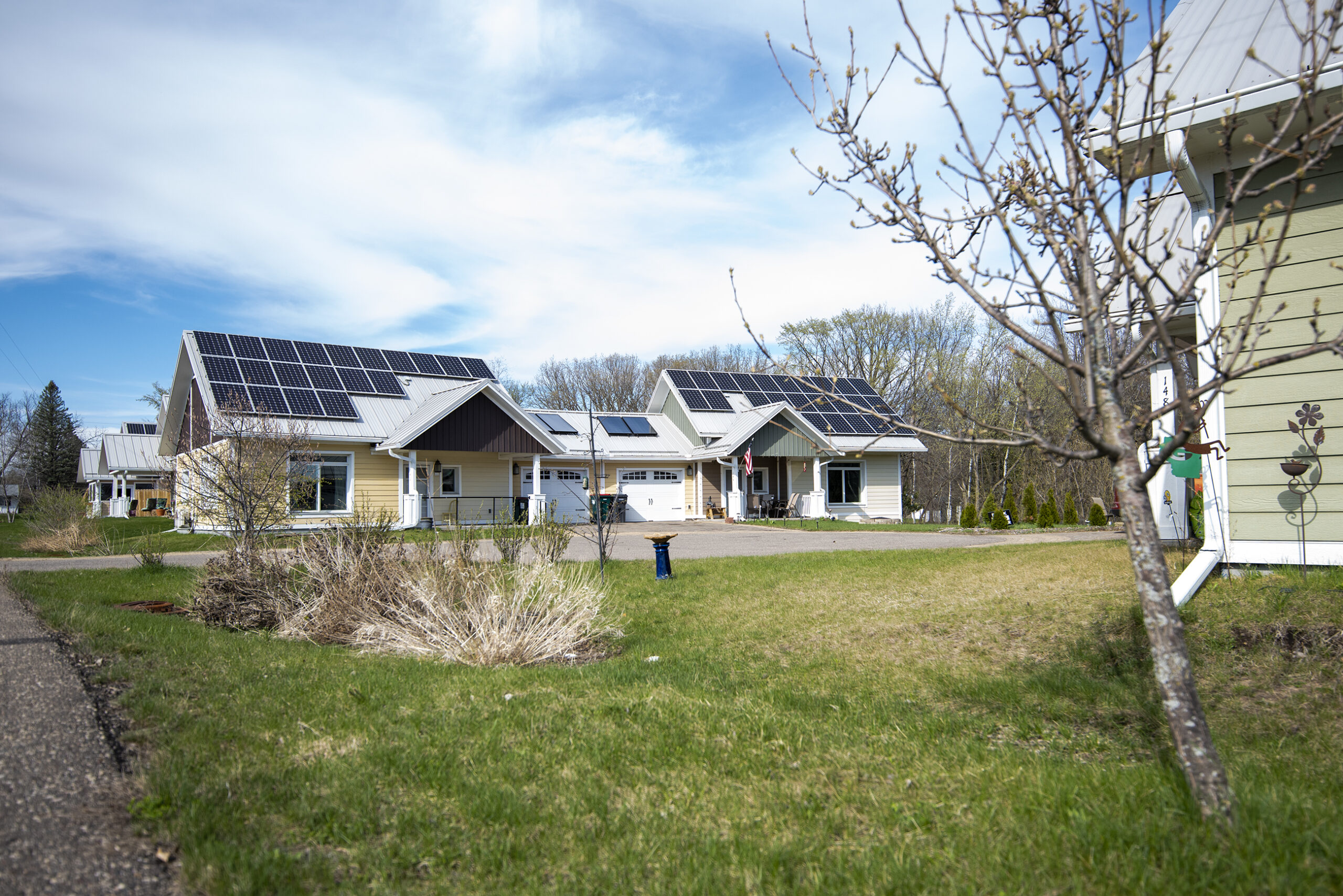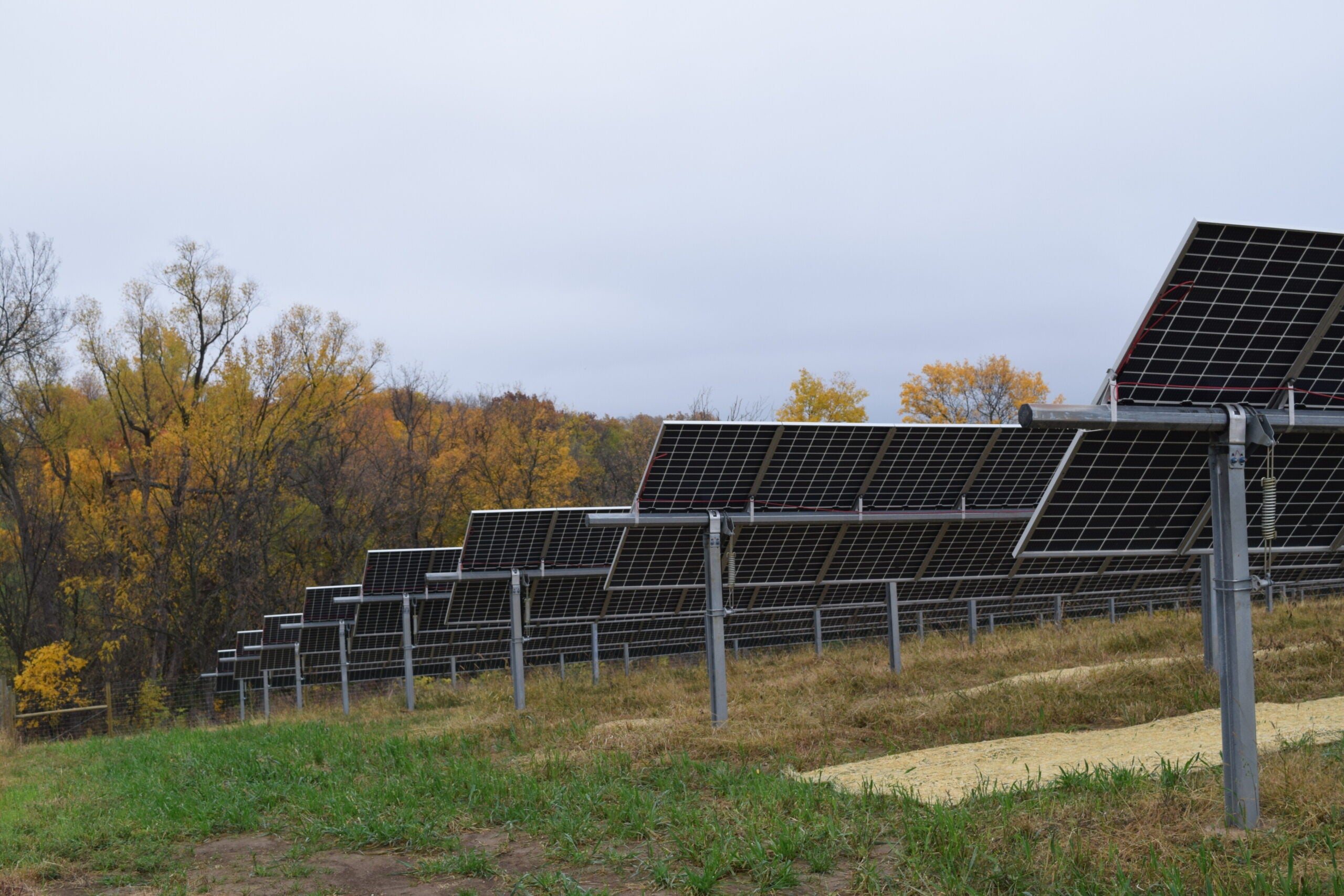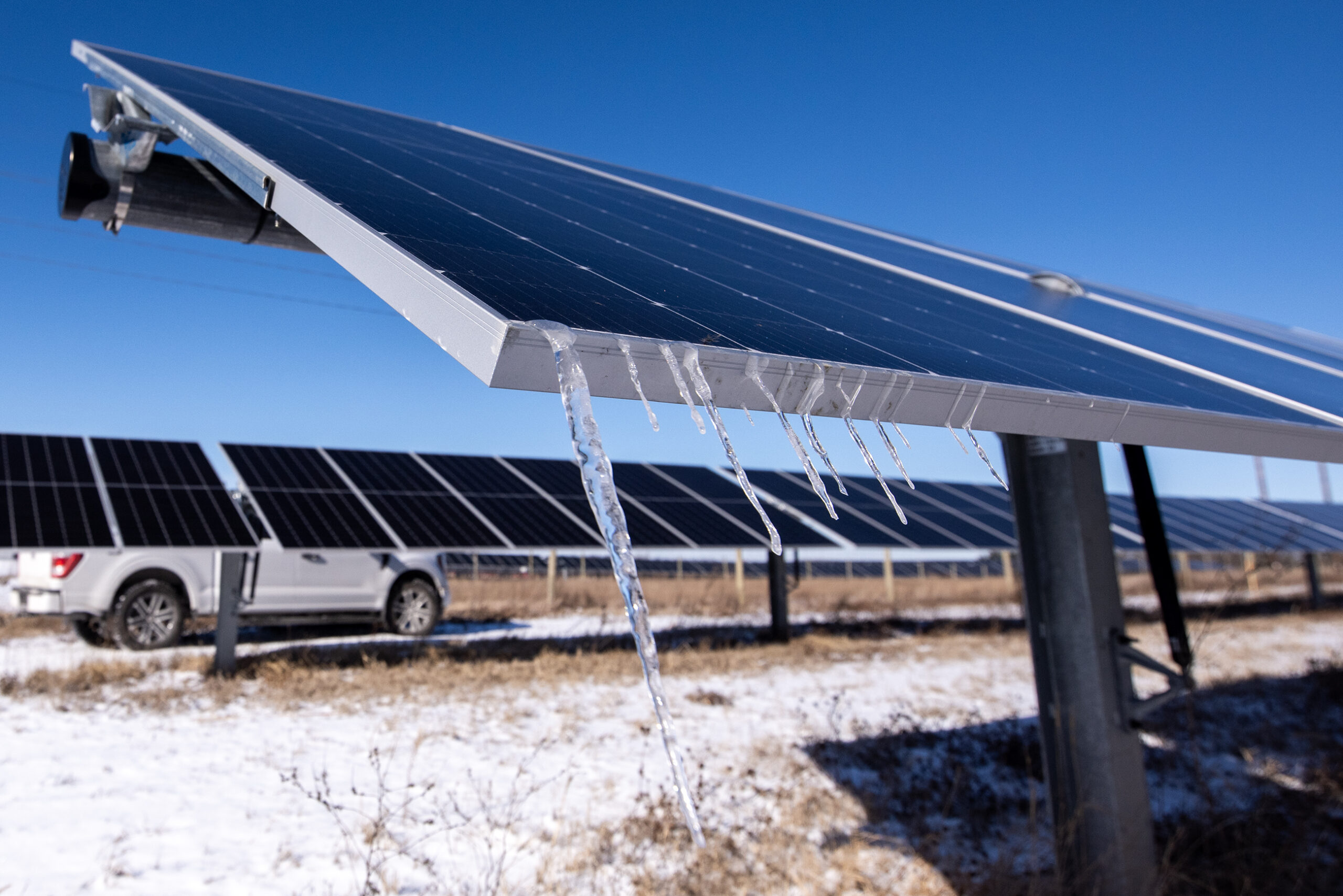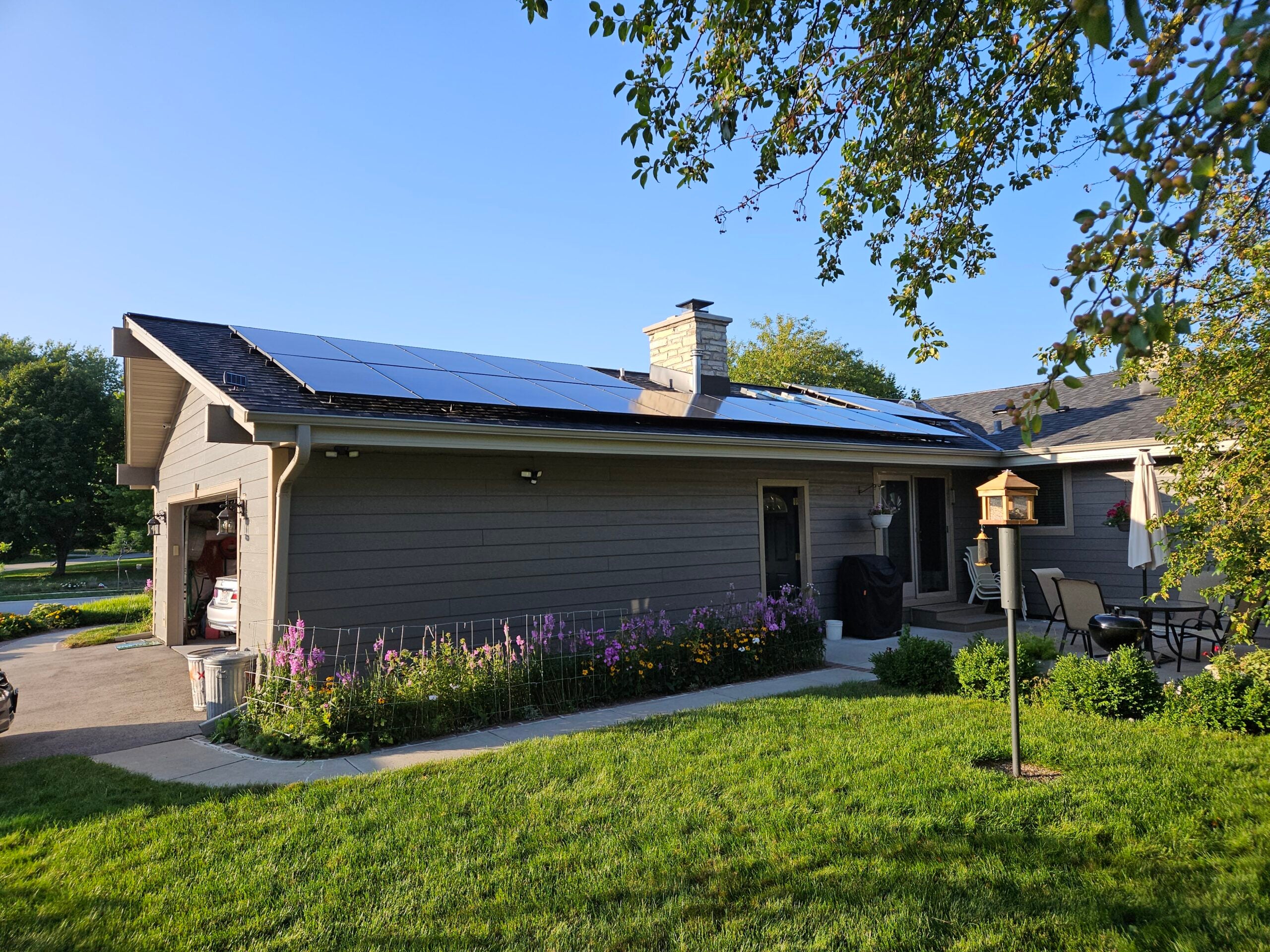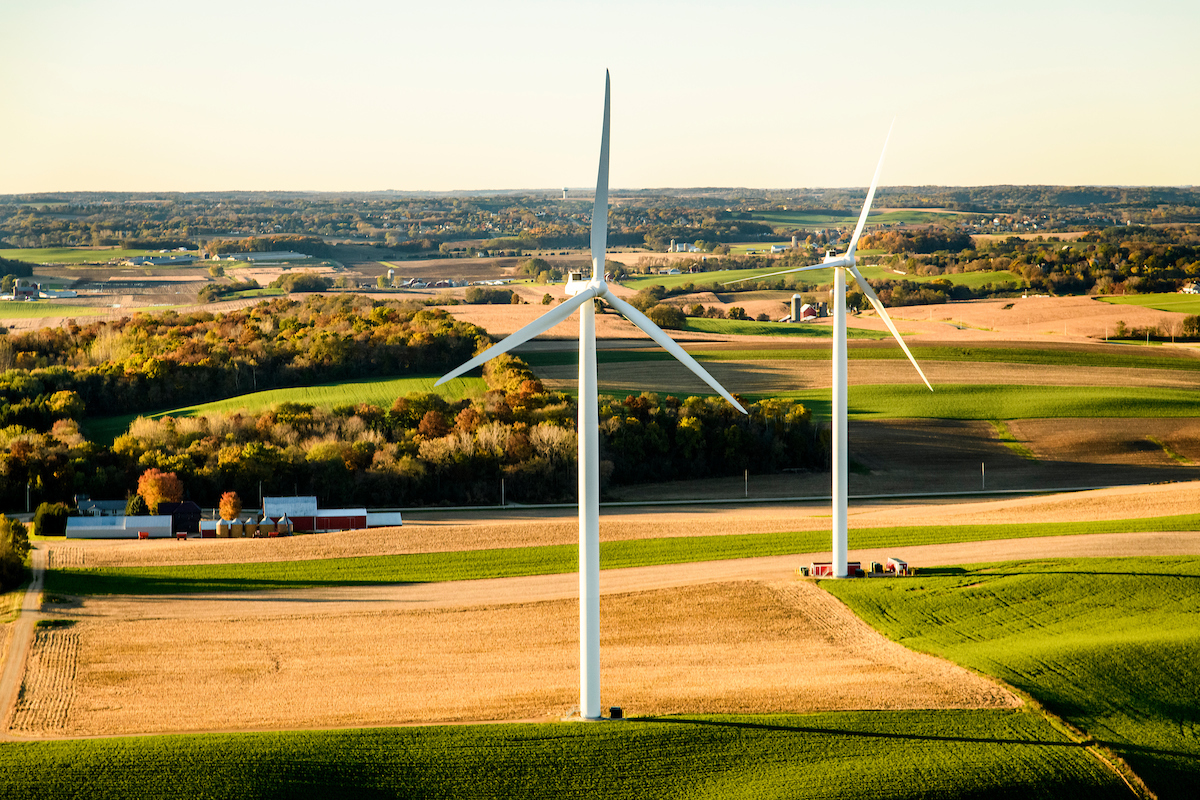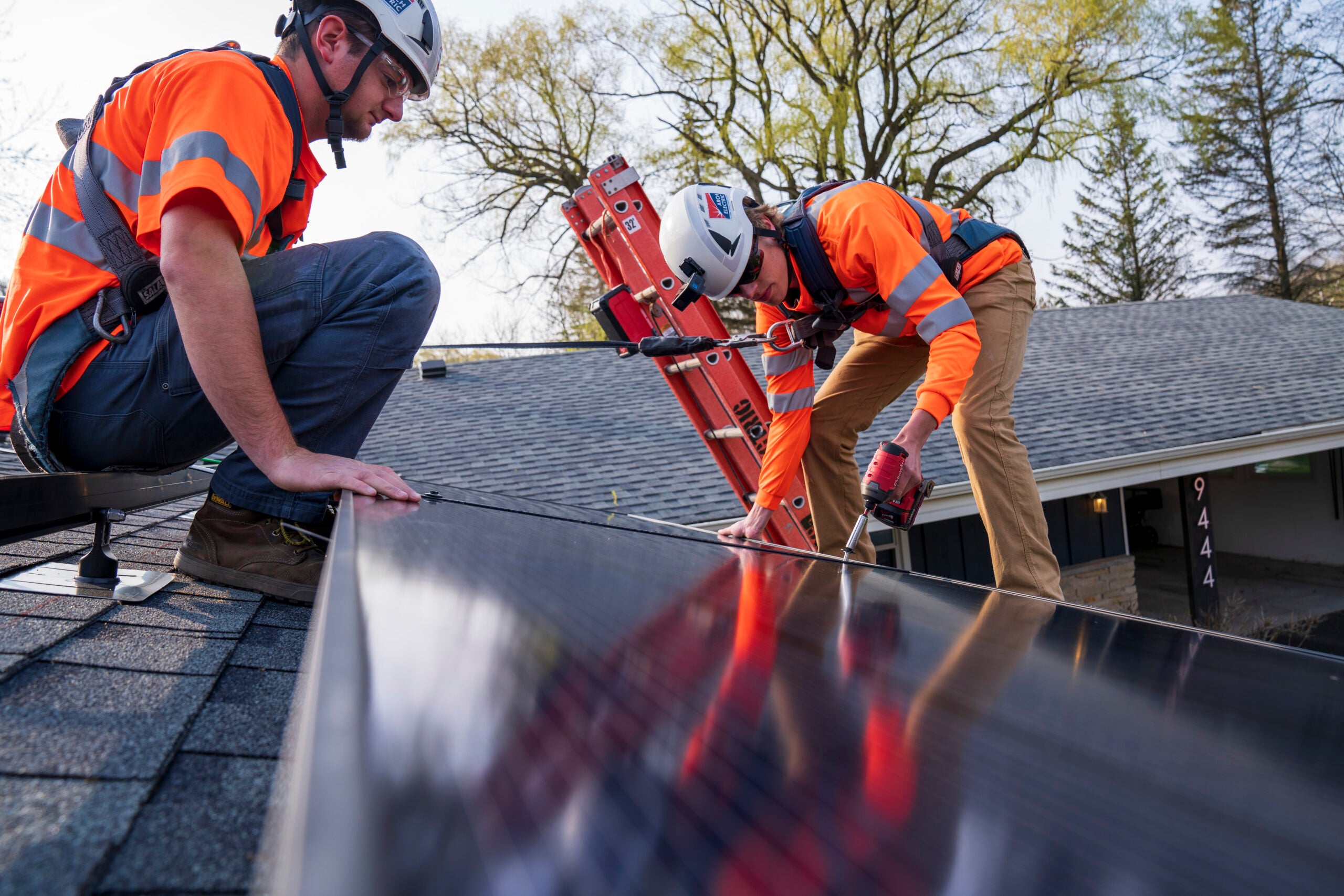Wisconsin is lagging behind some of its neighbors in terms of adoption of solar energy, but advocates say a few policy changes could help turn the tide.
A state-by-state map of the United States from the Solar Energy Industries Association shows Wisconsin had the second-fewest solar installations among its neighboring states — trailing only Iowa.
Through the fourth quarter of 2023, the Badger state had 15,164 installations, while Iowa had 14,448. Meanwhile, Illinois had a whopping 71,455 solar installations, Michigan had 20,920 and Minnesota had 18,216.
News with a little more humanity
WPR’s “Wisconsin Today” newsletter keeps you connected to the state you love without feeling overwhelmed. No paywall. No agenda. No corporate filter.
Although Wisconsin has more solar installations than Iowa, it’s behind when it comes to wind, according to Clean Wisconsin’s Chelsea Chandler.
“They have over 17 times the amount of wind capacity that we do here in Wisconsin,” said Chandler, who directs the organization’s Climate, Energy & Air program. “When you consider that factor, that actually makes Wisconsin look a little bit worse because we’re behind on solar, but we’re also woefully behind on wind. (There’s) a lot of room for improvement and a lot of opportunity for Wisconsin in terms of deploying more clean energy in our state.”
That’s not to say the state isn’t making progress in transitioning away from fossil fuels. The Public Service Commission of Wisconsin estimates that 2023 and 2024 will see 11 utility-scale solar projects come online. The commission also approved six future solar projects in 2023.
Chandler said utility-scale projects are important for the state’s overall transition away from carbon-based fuel, but there needs to be a “suite of strategies” to achieve net-zero emissions by 2050.
“There’s no silver bullet, we need silver buckshot,” she said. “One strategy alone is not going to get us where we need to be. Rooftop solar is absolutely an important piece of the puzzle.”
Michael Vickerman, clean energy deployment manager for RENEW Wisconsin, said Wisconsin may have fewer solar installations than Michigan, but it’s ahead proportionally. That’s because Michigan has over 10 million residents to Wisconsin’s roughly 5.8 million.
“We’re actually doing better than Michigan if you account for the fact that Michigan has more people,” Vickerman said. “But we are behind Minnesota, and we are behind Illinois.”
Vickerman said Illinois is experiencing a bit of a boom in residential solar, fueled by concerns around climate change and financial incentives.
Illinois passed a state law in 2021 that offers a rebate that equates to roughly 30 percent of the cost of a residential rooftop system, according to the Chicago Tribune.
“These rebates are set at a pretty high level, and they’re definitely driving the residential solar market in Illinois,” Vickerman said.
Solar advocates say policy changes could help spur development
Vickerman said there are a few policy changes that could help increase solar adoption without spending state money on rebates.
One of those changes would be to allow developers that aren’t regulated utilities to build community solar projects. Community solar — also called shared solar or solar gardens — allows customers to buy or lease part of a larger, off-site shared solar system. In Wisconsin, regulated utilities and cooperatives are the only entities allowed to provide energy to customers from solar gardens.
Vickerman said most of the state’s utilities don’t offer community solar programs.
“The utilities don’t have any competition to contend with, and therefore, they can decide whether they’re going to go forward with the program,” he said. “But they don’t have to, and, sadly, most don’t.”
Another policy change that could encourage residential solar development would be to allow for third-party financing for solar projects. Such financing allows an entity other than a utility to pay the upfront cost of a solar installation, letting the customer pay it off over time — essentially leasing their solar system.
Vickerman said the Public Service Commission did allow one third-party financing project to go forward, but, in doing so, they also said every example of a third party finance arrangement has to be reviewed individually.
“That’s not going to result in a breaking open of that particular marketplace,” Vickerman said. “Third party financing is also a key ingredient in the rapid growth of the Illinois residential market.”
Wisconsin Public Radio, © Copyright 2025, Board of Regents of the University of Wisconsin System and Wisconsin Educational Communications Board.

